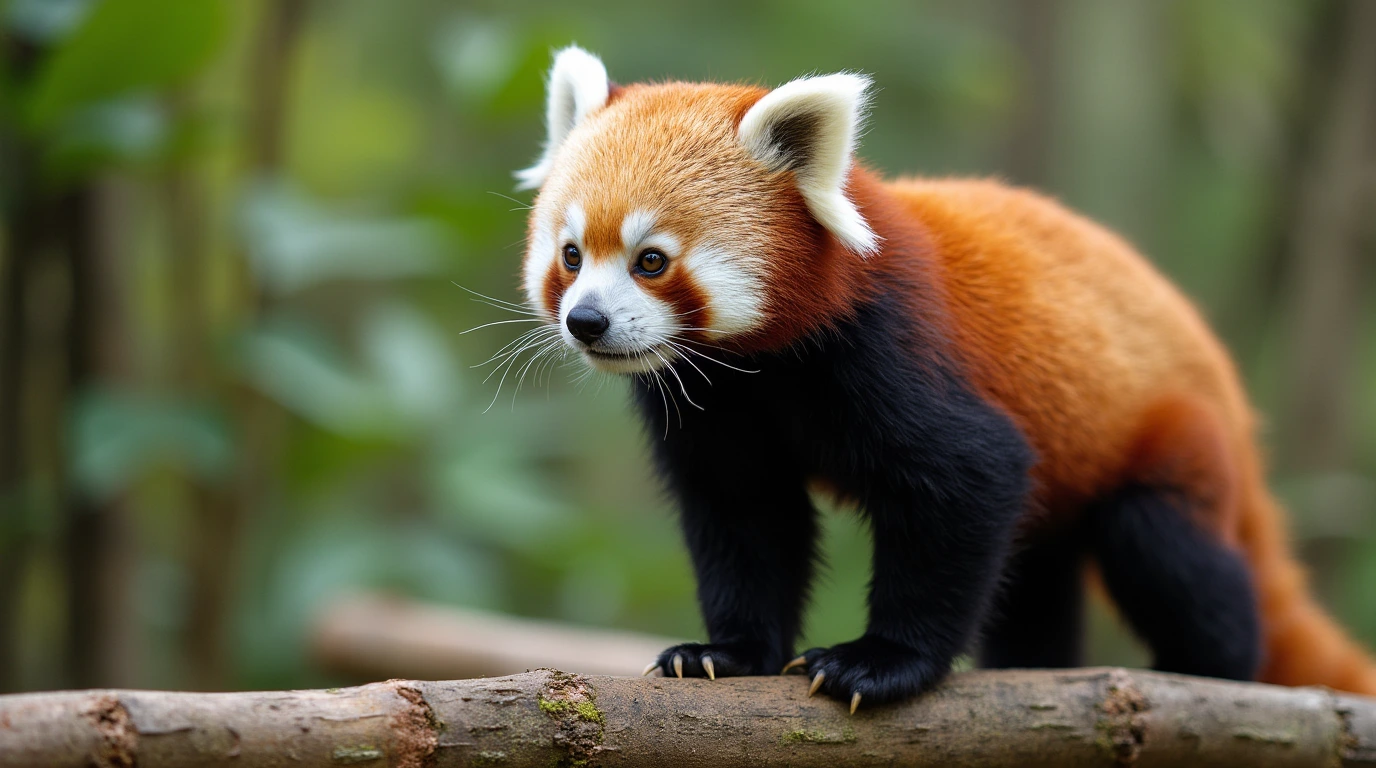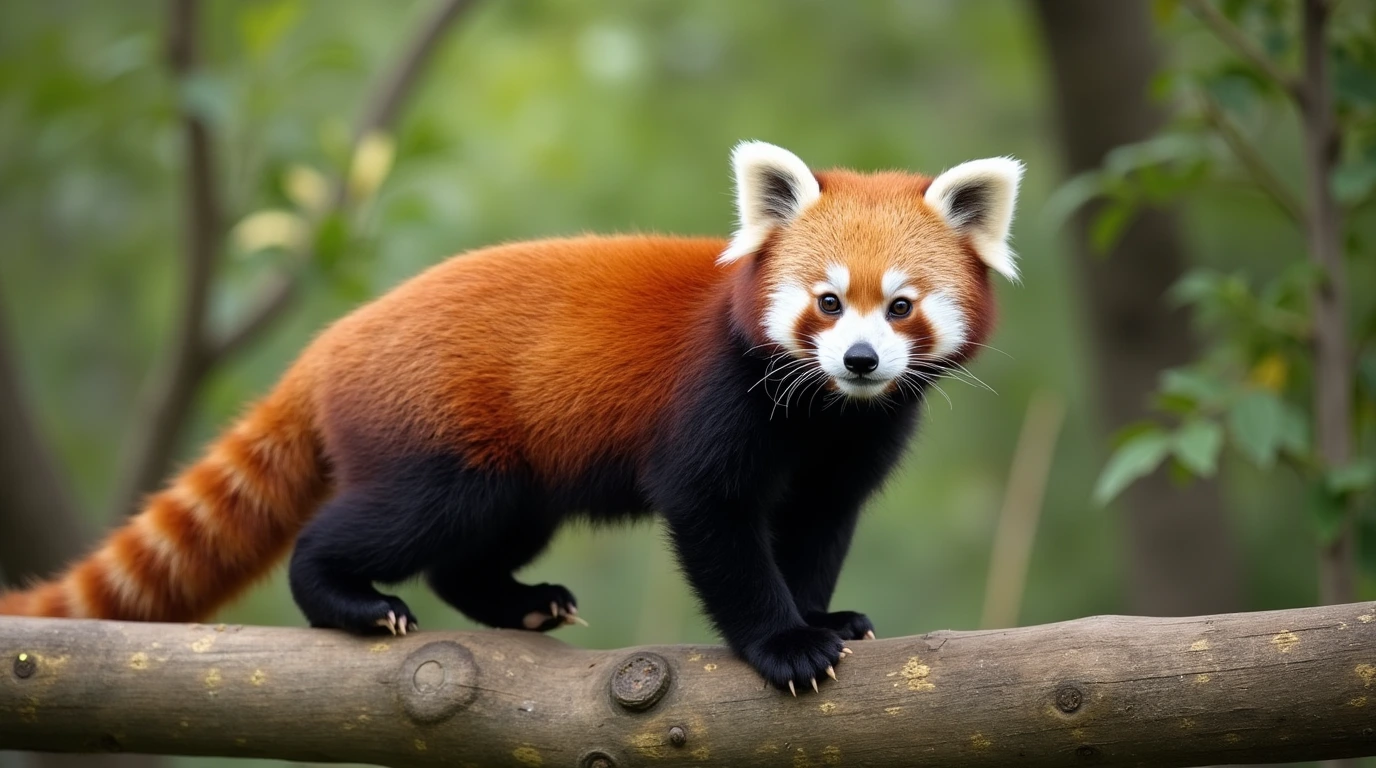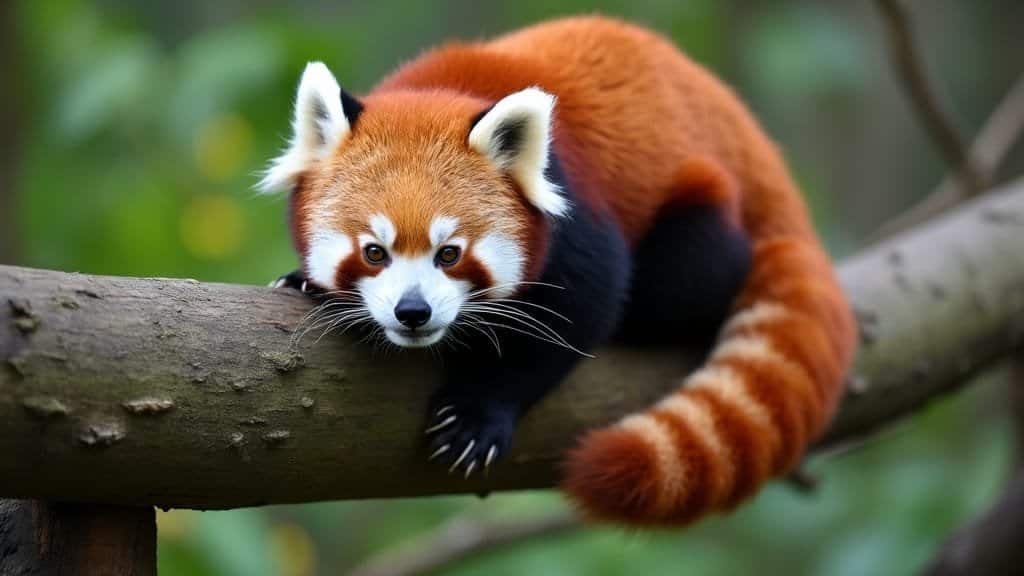Zoos play a vital and increasingly strategic role in global red panda conservation. While best known for housing red pandas in captivating exhibits, modern zoos contribute far beyond public display—they’re essential players in breeding, genetic research, public education, and habitat restoration efforts. From funding conservation programs in the Eastern Himalayas to supporting scientific studies and reforestation, zoos act as both caretakers and ambassadors for red pandas
In this article, we explore how zoos help conserve red pandas through collaborative breeding programs, veterinary science, public engagement, and direct partnerships with field-based conservation initiatives across Asia
Conservation Through Zoo-Based Red Panda Management

Zoos around the world have become important institutions in the broader fight to conserve red pandas, especially as wild populations continue to face pressure from habitat loss, climate change, and poaching. Their contributions are rooted in a combination of advanced animal care, collaborative breeding programs, and scientific study—components that collectively support both captive and wild red panda populations
These zoo-based efforts are designed not only to safeguard red pandas within managed facilities, but also to provide critical data and resources for in-situ conservation across red panda range countries
Captive Breeding Programs and Genetic Preservation
One of the most impactful ways zoos contribute to red panda conservation is through coordinated captive breeding. Managed through programs like the AZA’s Species Survival Plan (SSP), these efforts are designed to maintain healthy, genetically diverse populations in human care. Participating zoos collaborate globally to ensure that breeding pairs are strategically selected based on genetics, minimizing inbreeding and enhancing the overall genetic health of the species
Facilities like the Taronga Zoo in Australia, which has bred over 40 red panda cubs since the late 1970s, exemplify the long-term success of these programs. The goal is not simply to increase the number of red pandas in captivity, but to serve as a genetic reservoir that could potentially support wild populations in the future, should reintroduction become a viable option. These populations are carefully tracked using studbooks and specialized software that analyze bloodlines and reproductive compatibility
In addition to live breeding, some zoos have also begun storing genetic material in “frozen zoos.” This involves collecting and cryopreserving semen, eggs, and DNA from red pandas to be used in future assisted reproduction programs. The Padmaja Naidu Himalayan Zoological Park in India has spearheaded such efforts, ensuring that even individuals who cannot breed naturally can still contribute to the species’ genetic diversity
Scientific Research and Veterinary Contributions
Zoos provide controlled environments where scientists can study red panda biology in ways that are difficult in the wild. These settings offer insight into red panda physiology, behavior, nutrition, and reproductive health—data that informs both zoo-based and field-based conservation strategies
For example, Rotterdam Zoo in the Netherlands played a key role in developing and testing GPS collar technology used in the first-ever red panda tracking study conducted by the Red Panda Network in Nepal. Zoo scientists helped ensure the equipment was safe, effective, and suitable for the species’ arboreal lifestyle. Once proven successful in captivity, these devices were deployed in the wild, generating invaluable data on red panda movement patterns, territory sizes, and habitat use
Zoos also invest heavily in veterinary care, which contributes to global red panda health knowledge. From developing nutritional guidelines to identifying common diseases and preventive treatments, zoo veterinarians set the standard for red panda medical care. Their expertise is often shared with conservation organizations and wildlife rescue centers operating in red panda habitats, improving care quality across the board
Some zoos, like the Pittsburgh Zoo, even grow their own bamboo to feed their resident red pandas, allowing researchers to examine dietary preferences and nutritional balance in detail. These findings help optimize feeding protocols in captivity while also informing habitat management in the wild—ensuring that forest restoration efforts plant the right species of bamboo in the right locations
For more on how zoo partnerships contribute to red panda conservation, the Red Panda Network’s dedicated piece on the role of zoos outlines how facilities worldwide are aligning captive care with habitat protection goals
Educating the Public and Building Global Awareness

Beyond their scientific and breeding contributions, zoos serve as powerful educational platforms that raise awareness about the threats red pandas face and inspire public action. Every year, millions of zoo visitors come into close contact with red pandas, making these institutions a vital bridge between wildlife conservation and public understanding. Zoos leverage this visibility to transform passive admiration into meaningful engagement—through storytelling, immersive exhibits, and interactive conservation campaigns
Zoo Exhibits as Conservation Education Platforms
Red panda exhibits are more than just viewing areas—they’re designed as interpretive environments that educate visitors on everything from habitat loss to climate change. These spaces often include signage, videos, and guided talks that explain the ecological role of red pandas, the specific challenges they face in the wild, and how people can help protect them
For example, the Franklin Park Zoo in Boston opened its Red Panda Conservation Complex to create an immersive, educational experience for guests. The exhibit includes enrichment zones that demonstrate how zoos meet behavioral and physical needs, alongside displays about the animal’s range in the Eastern Himalayas, its diet, and threats like poaching and deforestation
Live demonstrations by zookeepers—such as feeding sessions or medical checks—further enrich the experience, offering a behind-the-scenes look at red panda care. These moments not only entertain but also educate audiences about the importance of conservation science and responsible wildlife management
Interactive elements such as QR codes, touchscreen stations, or conservation pledges allow visitors to deepen their understanding and take immediate action, such as symbolically adopting a red panda or donating to habitat protection projects
Enhancing Public Support Through Outreach Programs
Zoos also engage with the public beyond their gates. They organize school programs, virtual classroom sessions, and outreach events that connect red panda conservation with broader environmental education. For instance, many AZA-accredited zoos host International Red Panda Day celebrations every September, using games, crafts, and family activities to raise awareness among younger audiences
These events are often part of the Red Panda Network’s global educational initiative and may include fundraising drives, conservation lectures, and behind-the-scenes zoo tours. They also frequently feature partnerships with field organizations, enabling zoo visitors to learn about in-situ efforts and directly contribute to programs in Nepal, India, Bhutan, and China
In some cases, zoos even collaborate with local businesses or municipalities to promote broader sustainability goals—such as reducing plastic waste or supporting reforestation. These efforts reinforce the connection between individual action and global conservation success
Symbolic red panda adoptions are another tool that zoos use to channel public interest into financial support. Visitors can adopt a red panda for a fee that supports care costs in captivity and fieldwork in red panda habitats. These programs are especially popular with children and schools, making them effective entry points for long-term conservation engagement
One example of multi-channel public engagement is found in the work of the Pittsburgh Zoo, which not only supports captive breeding but also funds in-situ programs and participates in the SAFE (Saving Animals From Extinction) initiative. The zoo grows bamboo for its pandas, conducts keeper talks, and partners with global organizations to amplify its reach and impact. You can learn more about their program through their red panda conservation initiative
Zoo Support for Wild Red Panda Habitat Conservation

While zoos are often associated with ex-situ conservation—efforts that occur outside an animal’s natural environment—their role in in-situ conservation is just as critical. Through direct partnerships, funding, and fieldwork collaboration, many zoos extend their influence into the wild habitats where red pandas live. These initiatives bridge the gap between captive care and field conservation, ensuring that zoo-based efforts contribute to tangible, on-the-ground impact in red panda range countries
Partnerships with In-Situ Conservation Organizations
Zoos increasingly collaborate with field-based organizations like the Red Panda Network to support habitat protection, community engagement, and anti-poaching efforts. These partnerships are often financial but also include technical expertise, logistical support, and scientific collaboration
For example, John Ball Zoo in Michigan has become a major partner of the Red Panda Network, funding habitat restoration and community-based conservation in eastern Nepal. Their support has helped plant thousands of native trees and bamboo, build fuel-efficient stoves for forest-edge communities, and train Forest Guardians who patrol red panda territories
These alliances often go beyond simple donations. Zoo staff participate in training exchanges, travel to field sites for ecological assessments, or host international conservationists for workshops in animal care, veterinary science, and zoo education. This two-way flow of knowledge strengthens both zoo and field-based conservation programs
Other zoos, such as Woodland Park Zoo and Cincinnati Zoo, also support red panda conservation through the AZA’s SAFE (Saving Animals From Extinction) program. This initiative coordinates accredited zoos around shared conservation goals, centralizing funding, research, and outreach for species like the red panda. SAFE facilitates knowledge-sharing between institutions while pooling resources for maximum impact
Funding and Resources for Habitat Restoration Projects
One of the most impactful ways zoos contribute to in-situ conservation is by funding reforestation and corridor creation. Wild red panda populations are highly fragmented due to agriculture, deforestation, and road construction. By restoring native bamboo forests and connecting isolated habitats, conservationists help red pandas move safely between territories—essential for genetic diversity and long-term survival
Zoos help fund these projects through public donations, symbolic adoptions, conservation grants, and corporate sponsorships. The funds are often channeled directly into field operations, where they support nursery development, sapling planting, and post-planting care to ensure high survival rates
For instance, contributions from AZA-accredited zoos have helped the Red Panda Network establish the PIT Red Panda Protected Forest in Nepal—one of the largest community-managed red panda corridors in the world. The area is patrolled by trained locals, monitored with camera traps, and regularly surveyed to measure conservation impact
Zoos also support the social dimensions of conservation. Through their fundraising, they help provide scholarships, training, and livelihood opportunities for people living near red panda habitats. These efforts reduce pressure on forests while ensuring that communities are active partners in protecting biodiversity
To read how John Ball Zoo supports such efforts in partnership with the Red Panda Network, AZA’s profile on their field impact offers a great overview of how a U.S.-based institution can directly influence the future of red pandas in the wild











